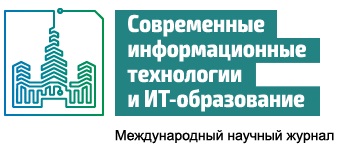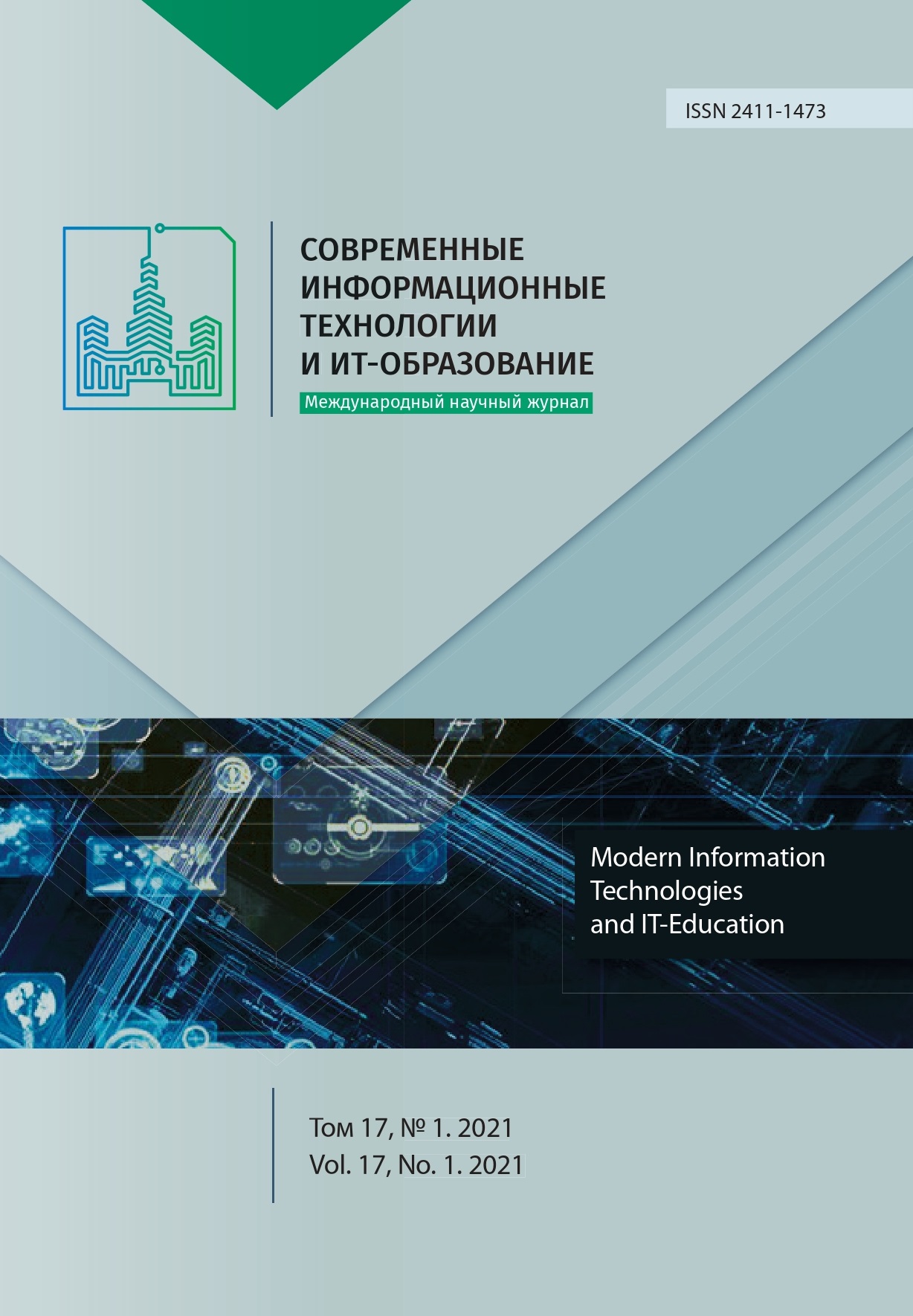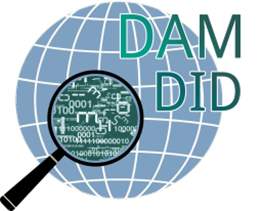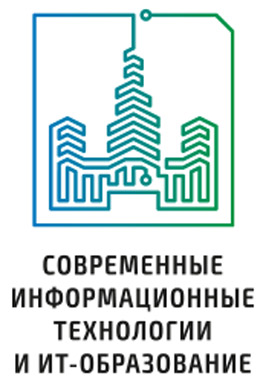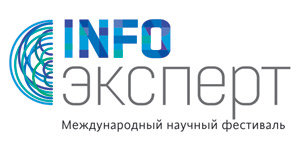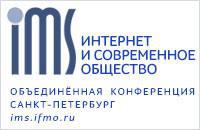Визуализация данных в облачном сервисе для научных расчетов
Аннотация
Сервис saas.jinr.ru является попыткой упростить использование Многофункционального информационно-вычислительного комплекса Объединенного института ядерных исследований. Сервис saas.jinr.ru - это попытка упростить использование Многофункционального информационно-вычислительного комплекса (МИВК) Объединенного института ядерных исследований (ОИЯИ). Его цель - предоставить простой проблемно-ориентированный веб-интерфейс, который поможет студентам и начинающим исследователям в области физики абстрагироваться от сложности вычислительной инфраструктуры и сосредоточиться на реальных исследованиях. В этой статье мы показываем наш подход к одной из задач в рамках проекта: интерактивная визуализация данных в веб-браузере. Подходя к этой проблеме, мы учли два основных требования к системе: во-первых, пользователи могут не обладать какими-либо навыками программирования, поэтому любое взаимодействие должно происходить с использованием простых визуальных компонентов; во-вторых, система должна быть масштабируемой по горизонтали, чтобы справляться с нерегулярными рабочими сессиями пользователей. В статье описывается, как были использованы Bokeh и Dask для интеграции нашего решения визуализации данных в структуру Django, чтобы удовлетворить первому требованию, и облако ОИЯИ для масштабирования сервиса. Применение облачных технологий позволяет динамически перераспределять нагрузку между виртуальными машинами, что позволяет контролировать баланс между эффективным использованием оборудования и удобством для конечных пользователей. Приведенные в этой работе итоговая архитектура программного обеспечения и прикладные решения, а также некоторые оценки производительности могут быть использованы в качестве примера при разработке других облачных научных приложений.
Литература
2.Balashov N.A., Baranov A.V., Kutovskiy N.A., Makhalkin A.N., Mazhitova Ye.M., Pelevanyuk I.S., Semenov R.N. Present Status and Main Directions of the JINR Cloud Development. CEUR Workshop Proceedings: Proc. of 27th International Symposium NEC-2019 (Budva, Montenegro). 2019; 2507:185-189. Available at: http://ceur-ws.org/Vol-2507/185-189-paper-32.pdf (accessed 24.02.2021). (In Eng.)
3.Adam Gh., Bashashin M., Belyakov D., Kirakosyan M., Matveev M., Podgainy D., Sapozhnikova T., Streltsova O., Torosyan Sh., Vala M., Valova L., Vorontsov A., Zaikina T., Zemlyanaya E., Zuev M. IT-ecosystem of the HybriLIT heterogeneous platform for high-performance computing and training of IT-specialists. CEUR Workshop Proceedings. 2018; 2267:638-644. Available at: http://ceur-ws.org/Vol-2267/638-644-paper-122.pdf (accessed 24.02.2021). (In Eng.)
4.Balashov N., Bashashin M., Kuchumov R., Kutovskiy N., Sokolov I. JINR Cloud Service for Scientific and Engineering Computations. Sovremennye informacionnye tehnologii i IT-obrazovanie = Modern Information Technologies and IT-Education. 2018; 14(1):61-72.(In Eng.) DOI: https://doi.org/10.25559/SITITO.14.201801.061-072
5.Balashov N., Kutovskiy N., Priakhina D., Sokolov I. Evolution and Perspectives of the Service for Parallel Applications Running at JINR Multifunctional Information and Computing Complex. EPJ Web of Conferences. 2020; 226:03002. (In Eng.) DOI: https://doi.org/10.1051/epjconf/202022603002
6.Idreos S., Papaemmanouil O., Chaudhuri S. Overview of Data Exploration Techniques. Proceedings of the 2015 ACM SIGMOD International Conference on Management of Data (SIGMOD '15). Association for Computing Machinery, New York, NY, USA; 2015. p. 277-281. (In Eng.) DOI: https://doi.org/10.1145/2723372.2731084
7.Raghav R.S., Pothula S., Vengattaraman T., Ponnurangam D. A survey of data visualization tools for analyzing large volume of data in big data platform. 2016 International Conference on Communication and Electronics Systems (ICCES).Coimbatore, India; 2016. p. 1-6. (In Eng.) DOI: https://doi.org/10.1109/CESYS.2016.7889976
8.Caldarola E.G., Rinaldi A.M. Big Data Visualization Tools: A Survey. Proceedings of the 6th International Conference on Data Science, Technology and Applications (DATA 2017). SCITEPRESS – Science and Technology Publications, Lda, Setubal, PRT; 2017. p. 296-305. (In Eng.) DOI: https://doi.org/10.5220/0006484102960305
9.Qin X., Luo Y., Tang N., Li G. Making data visualization more efficient and effective: a survey. The VLDB Journal. 2020; 29(1):93-117. (In Eng.) DOI: https://doi.org/10.1007/s00778-019-00588-3
10.Shukrinov Yu.M. et al. Modeling of LC-shunted intrinsic Josephson junctions in high-Tc superconductors. Superconductor Science and Technology. 2016; 30(2):024006. (In Eng.) DOI: https://doi.org/10.1088/1361-6668/30/2/024006
11.Bokhari M.U., Shallal Q.M., Tamandani Y.K. Cloud computing service models: A comparative study. 2016 3rd International Conference on Computing for Sustainable Global Development (INDIACom). IEEE, New Delhi, India; 2016. p. 890-895. (In Eng.)
12.Cardellini V., Colajanni M., Yu P.S. Dynamic load balancing on Web-server systems. IEEE Internet Computing. 1999; 3(3):28-39. (In Eng.) DOI: https://doi.org/10.1109/4236.769420
13.Rocklin M. Dask: Parallel Computation with Blocked algorithms and Task Scheduling. In: K. Huff, J. Bergstra (Eds.) Proceedings of the 14th Python in Science Conference (SciPy 2015). Austin, Texas; 2015. p. 126-132. (In Eng.) DOI: https://doi.org/10.25080/Majora-7b98e3ed-013
14.Bird I. Computing for the Large Hadron Collider. Annual Review of Nuclear and Particle Science. 2011; 61:99-118. (In Eng.) DOI: https://doi.org/10.1146/annurev-nucl-102010-130059
15.Baranov A.V., Balashov N.A., Kutovskiy N.A., Semenov R.N. JINR cloud infrastructure evolution. Physics of Particles and Nuclei Letters. 2016; 13(5):672-675. (In Eng.) DOI: https://doi.org/10.1134/S1547477116050071
16.Greenfeld D.R., Greenfeld A.R. Two Scoops of Django: Best Practices for Django 1.8. 3rd ed. Two Scoops Press. Publ.; 2015. (In Eng.)
17.Thain D., Tannenbaum T., Livny M. Distributed Computing in Practice: The Condor Experience. Concurrency and Computation: Practice and Experience. 2005; 17(2-4):323-356. (In Eng.) DOI: https://doi.org/10.1002/cpe.938
18.Adamson P. et al. First measurement of electron neutrino appearance in NovA. Physical Review Letters. 2016; 116(15):151806. (In Eng.) DOI: https://doi.org/10.1103/PhysRevLett.116.151806
19.Moreno-Vozmediano R., Montero R.S., Llorente I.M. IaaS Cloud Architecture: From Virtualized Datacenters to Federated Cloud Infrastructures. IEEE Computer. 2012; 45(12):65-72. (In Eng.) DOI: https://doi.org/10.1109/MC.2012.76
20.Balashov N.A. et al. JINR Member States cloud infrastructure. CEUR Workshop Proceedings. 2017; 2023:202-206. Available at: http://ceur-ws.org/Vol-2023/122-128-paper-19.pdf (accessed 24.02.2021). (In Eng.)
21.Balashov N.A. et al. Service for parallel applications based on JINR cloud and HybriLIT resources. EPJ Web of Conferences. 2019; 214:07012. (In Eng.) DOI: https://doi.org/10.1051/epjconf/201921407012
22.Balashov N. et al. Creating a Unified Educational Environment for Training IT Specialists of Organizations of the JINR Member States in the Field of Cloud Technologies. In: V. Sukhomlin, E. Zubareva (Eds.) Modern Information Technology and IT Education. SITITO 2018. Communications in Computer and Information Science, vol. 1201. Springer, Cham; 2020. p. 149-162. (In Eng.) DOI: https://doi.org/10.1007/978-3-030-46895-8_12
23.Goncharov P., Ososkov G., Nechaevskiy A., Uzhinskiy A. Architecture and basic principles of the multifunctional platform for plant disease detection. CEUR Workshop Proceedings. 2018; 2267:200-206. Available at: http://ceur-ws.org/Vol-2267/200-206-paper-37.pdf (accessed 24.02.2021). (In Eng.)
24.Weil S.A., Brandt S.A., Miller E.L., Long D.D.E., MaltzahnC. Ceph: a scalable, high-performance distributed file system. Proceedings of the 7th symposium on Operating systems design and implementation (OSDI'06). USENIX Association, Berkeley, CA, USA; 2006. p. 307-320. Available at: https://www.ssrc.ucsc.edu/papers/weil-osdi06.pdf (accessed 24.02.2021). (In Eng.)
25.Massie M., Chun B., Culler D. The Ganglia Distributed Monitoring System: Design, Implementation, and Experience. Parallel Computing. 2004; 30:817-840. (In Eng.) DOI: https://doi.org/10.1016/j.parco.2004.04.001

Это произведение доступно по лицензии Creative Commons «Attribution» («Атрибуция») 4.0 Всемирная.
Редакционная политика журнала основывается на традиционных этических принципах российской научной периодики и строится с учетом этических норм работы редакторов и издателей, закрепленных в Кодексе поведения и руководящих принципах наилучшей практики для редактора журнала (Code of Conduct and Best Practice Guidelines for Journal Editors) и Кодексе поведения для издателя журнала (Code of Conduct for Journal Publishers), разработанных Комитетом по публикационной этике - Committee on Publication Ethics (COPE). В процессе издательской деятельности редколлегия журнала руководствуется международными правилами охраны авторского права, нормами действующего законодательства РФ, международными издательскими стандартами и обязательной ссылке на первоисточник.
Журнал позволяет авторам сохранять авторское право без ограничений. Журнал позволяет авторам сохранить права на публикацию без ограничений.
Издательская политика в области авторского права и архивирования определяются «зеленым цветом» в базе данных SHERPA/RoMEO.
Все статьи распространяются на условиях лицензии Creative Commons «Attribution» («Атрибуция») 4.0 Всемирная, которая позволяет другим использовать, распространять, дополнять эту работу с обязательной ссылкой на оригинальную работу и публикацию в этом журналe.
